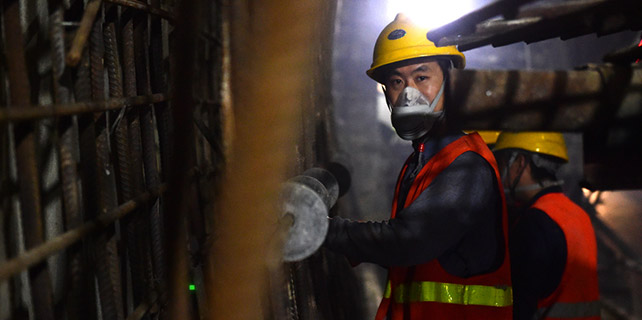US economy slowed in fourth quarter despite robust consumer spending
The US economy expanded at a slower pace in the fourth quarter, as previously reported, and appeared to remain on a moderate growth path as President Donald Trump took office with a promise to reinvigorate manufacturing and protect jobs.
Trump has pledged to boost annual economic growth to 4 percent through a mix of infrastructure spending, sweeping tax cuts and deregulation. He is expected to outline part of his program in a speech to Congress on Tuesday night.
Gross domestic product rose at a 1.9 percent annual rate in the fourth quarter, the Commerce Department said in its second estimate, as downward revisions to business and government investment offset robust consumer spending.
The estimate matched what was published last month. Output increased at a 3.5 percent rate in the third quarter.
The economy grew 1.6 percent for all of 2016, its worst performance since 2011, after expanding 2.6 percent in 2015.
"The overall size and composition of the Trump economic stimulus is yet unknown. However, it is likely to contribute to further economic strength for the balance of this year and beyond," said Sung Won Sohn, an economics professor at California State University Channel Islands in Camarillo.
Trump, who made his 4 percent GDP growth pledge during last year's election campaign, has promised a "phenomenal" tax plan that the White House said would include tax cuts for businesses and individuals.
Details on the proposal remain vague, though Treasury Secretary Steven Mnuchin said on Sunday that Trump would use his speech to Congress to preview some aspects of his tax reform plans.
Economists polled by Reuters had expected fourth-quarter GDP would be revised up to a 2.1 percent rate on Tuesday.
In another report, the Commerce Department said the goods trade deficit jumped 7.6 percent to $69.2 billion in January. Inventories at wholesalers fell 0.1 percent last month, while stocks at retailers increased 0.8 percent.
However, retail inventories excluding automobiles, which go into the GDP calculation, were unchanged after increasing 0.3 percent in December. Economists said the wider goods deficit and weak inventories posed a downside risk to first-quarter GDP growth estimates, which are currently around a 2 percent rate.
"It now looks like trade will subtract over a half point from growth in the first quarter and inventories will be close to a neutral factor," said Daniel Silver, an economist at JPMorgan in New York.
The trade deficit sliced off 1.70 percentage points from GDP growth in the fourth quarter, while inventories contributed 0.94 percentage point.
Expectations of moderate growth in the first quarter suggest the Federal Reserve is likely to maintain its gradual pace of interest rate increases.
US government bond prices were trading higher on Tuesday, while the dollar DXY fell against a basket of currencies. US stocks were trading lower.
STRONG DOMESTIC DEMAND
Consumer spending, which accounts for more than two-thirds of US economic activity, was revised sharply higher to a 3.0 percent rate of growth in the fourth quarter. It was previously reported to have risen at a 2.5 percent rate. That left private domestic demand increasing at a brisk 3.0 percent rate.
Some of the rise in demand was met with imports, which subtracted from GDP growth. There is scope for consumer spending to rise further against the backdrop of a tightening labor market and surging confidence among households.
In a third report on Tuesday, the Conference Board said its consumer confidence index jumped 3.2 percent to 114.8, the highest reading since July 2001. Consumers remained upbeat about the labor market amid expectations of income gains.
Business investment was not as strong as initially thought in the fourth quarter. Spending on equipment increased at a 1.9 percent rate instead of the previously estimated 3.1 percent pace. Business investment contributed 0.17 percentage point to GDP growth, less than the 0.30 percentage reported last month.
Business spending has been partly hobbled by lower oil prices, which have crimped demand for machinery, but an acceleration is likely.
A fourth report on Tuesday from the Institute for Supply Management-Chicago showed its business index surged 7.1 points to a reading of 57.4 in February, the strongest level since January 2015. Companies in the Chicago area reported robust new order growth and production.
Reuters
















